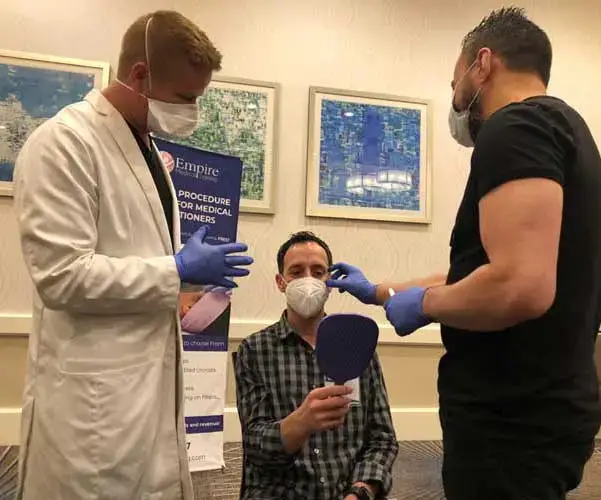The Fascinating Discovery of Botox®: A Historical Journey
By Dr. Stephen Cosentino
PRESIDENT OF EMPIRE MEDICAL TRAINING
Botox® is a blockbuster drug that’s FDA-approved to treat more than a dozen medical and cosmetic conditions. It makes billions of dollars each year for Allergan, its manufacturer, and has spawned several imitators derived from the same active ingredient.
It wasn’t always this way. Botox’s first medical uses were highly specific and not very common; widespread cosmetic use didn’t begin until the 2000s. Before that, the medical community largely shunned the active ingredient in Botox due to its powerful toxicity.
So, how (and why) was Botox discovered and put to use? The story begins 200 years ago in Germany.
How Was Botox Discovered?
Serious foodborne illness was a fact of life in preindustrial Europe — and one of many now-preventable causes of premature death.
That began to change in the 1820s, with German physician Justinus Kerner’s release of a comprehensive study of an outbreak of what locals called “sausage poisoning.” Dr. Kerner described the symptoms and disease progression of foodborne botulism: muscle weakness, numbness, paralysis, and sometimes respiratory failure and death.
Though his work helped improve food safety practices in Germany and beyond, Dr. Kerner didn’t have the tools to isolate the microorganism responsible for the outbreak. That happened about 70 years later, when Belgian bacteriologist Emile van Ermengem found the bacterium Clostridium botulinum in a batch of ham known to have caused a deadly botulism outbreak.
At this point, the medical community knew that ingesting C. botulinum was dangerous and suspected that the bacterium produced a neurotoxic poison, but the substance was yet to be isolated and described. Medical researcher Dr. Hermann Sommer finally did so in 1928, purifying what would become known as botulinum toxin type A in his University of California-San Francisco lab.
Early Botox Indications
Dr. Sommer’s breakthrough set the stage for everything to follow, but Botox still wasn’t on anyone’s radar as a medical or cosmetic treatment.
In fact, the earliest Botox “indications” were decidedly nasty. Before and during World War II, both Axis and Allied powers (including Japan and the United States) investigated and in some cases used botulinum toxin as a weapon of war. U.S. military intelligence considered and ultimately decided against using it to assassinate high-ranking enemy officials.
Attention turned to potential civilian uses in the 1960s and 1970s. In the United States, Food and Drug Administration trials for blepharospasm (eyelid spasm) patients began in the late 1970s, with full FDA approval coming in 1989. North of the border, Vancouver ophthalmologist Dr. Jean Carruthers began Botox treatments for blepharospasm in the mid-1980s, then began off-label treatments for forehead lines and frown lines between the eyebrows (also known as glabellar lines or ‘11’ lines) after noticing that the medication would smooth lines and wrinkles in those areas.
Soon enough, Dr. Carruthers (and her husband and business partner Dr. Alastair Carruthers) were focusing full-time on cosmetic procedures while campaigning for wider adoption of the miraculous new drug in the aesthetic medicine community.
Botox Today
The Carrutherses’ advocacy paid off and then some. Botox skyrocketed in popularity in the late 2000s and early 2010s, and today, it’s the most widely used cosmetic treatment on the market — with more than 7 million doses administered in 2018. Despite the active ingredient’s toxicity, Botox’s side effects are manageable with proper training and patient awareness, enhancing its appeal over traditional plastic surgery.
In addition to blepharospasm, forehead lines, and glabellar lines, Botox’s present-day indications include chronic migraine, cervical dystonia, excessive sweating, lazy eye, twitching eye, bladder dysfunction, and a range of new cosmetic treatments. Botox and dermal filler combination courses and advanced injectables training courses serve a growing crop of board-certified plastic surgeons, dermatologists, and other medical providers. And the FDA continues to investigate and approve new indications — so Botox is likely to become even more popular in the coming years.


